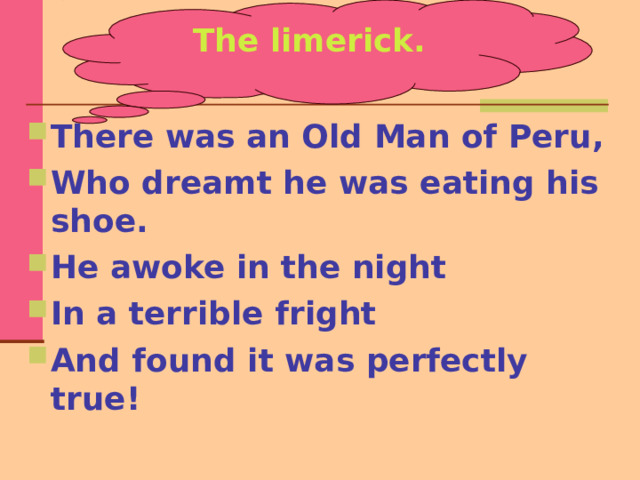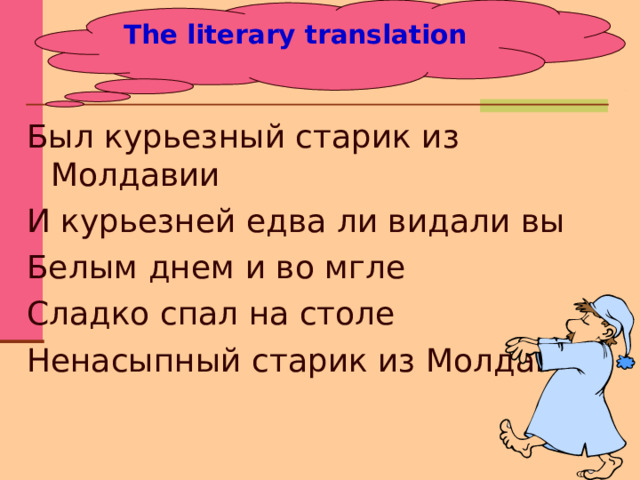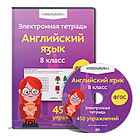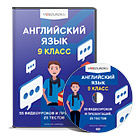Внеклассное мероприятие по теме
«Что такое - Лимерик?»
Цель: познакомить учащихся с лимериком и научить отличать его от других стихотворений.
Задачи: продолжить формирование фонетических и лексических навыков, языковой догадки; обеспечить усвоение понятия «лимерик» и его структуры; развивать умение аудирования и чтения; прививать интерес к культуре Англии; воспитывать чувство взаимопомощи, внимания друг к другу. Формировать у учащихся умение сравнивать, преодолевать трудности, самостоятельно мыслить.
Оснащение: карточки со скороговорками, карточки с рифмующимися словами, стихи с пропущенным словом, карточки «испорченный лимерик», опорная схема лимерика для аудирования, презентация Power Point, компьютер, проектор.
Форма проведения: соревнование между группами.
ХОД УРОКА:
1.Организационный момент:
Hello, everybody! As you know, this week in our school is “The week of the Foreign Languages” and it is devoted to literature. So today we have a competition between four teams and it will be devoted to literature, of course.
Before we’ll begin our competition, I’d like to introduce our guests today. They are: the teacher of the English language… . And this is our jury: … .
Now I want all captains to introduce your teams for us! Please, captains name your teams.
2. Определение темы мероприятия:
Ok, let’s start! Your fist task is “Decode the word” This word will be the theme of our activity!
(Каждая команда получает карточку с зашифрованным словом, кто быстрее и правильно расшифрует слово, получает 3 балла)
L i m e r i c k
Yes, you are right. The theme of our activity is “The limerick”
(слайд 1)
What is a limerick? Do you know? Is it interesting for you to get to know about it? Today you will do different tasks in group to learn about limericks.
But first of all let’s practice your phonetics.
3. Фонетическая зарядка: T-Cl (слайд 2,3,4)
Soap and water
Son and daughter
Hot and cold
Young and cold
Eat and drink
Pen and ink
Late and soon
Sun and moon
Black and white
Day and night
Fur and feather
Wind and weather
What a lot of words
Go about together!
4. Подобрать рифмующиеся слова.
Now your task is “Find the rhymed words and read them correctly”.
Each participant of the group must read the rhymed words. You’ll have 2 min.
| Team 1 face / mean kiss / toy joy / space warm / this clean / storm
|
| Team 2 get / wax live / talk sad / let tax / mad walk / give
|
| Team 3 clear / zoo call / nose again / tall rose / rain blue / dear
|
| Team 4 nine / son lane / sea run / salad tea / dine ballad / main
|
(Жюри оценивает правильность чтения рифмующихся слов – 1 балл за каждую правильную пару слов)
5. Конкурс капитанов «Прочитай скороговорку»
Now it will be “The Captain’s competition”. You’ll have 2 minutes to read your tongue twister correctly and as quickly as possible. You may practice in your team.
(Получают скороговорку)
He was sad that day he said: “I am awfully upset”.
(Жюри оценивает правильность и скорость чтения скороговорки
- 3 балла)
6. Угадать рифмующееся слово и правильно прочитать стихотворение.
The next task is “Guess the rhymed word and read the poem correctly”
Write down your answers on the sheet of paper and give one variant to the jury.
You’ll have 5 min.
(Учащиеся читают стихи, подбирают слова и записывают их на листочек, один экземпляр отдают жюри на проверку – за каждый правильный вариант – по 2 балла)
1) My Teddy’s fur is soft and brown
His legs are short and fat,
He walks with me all round the town
And wears a … (hat)
2) My Teddy keeps me warm in bed
I like his furry (меховые) toes,
I like his darling little head,
His pretty little … (nose)
3) F is for fish
Swimming in the sea
I wish for a gold fish
To come back to … (me)
4) Q is for Queen
Whom I’ve never seen
She is like a star
So high and … (far)
7. Прослушать рассказ учителя о лимерике и его структуре, описать лимерик по опорной схеме. (слайд5,6,7)
Now your task will be listening. Listen to text “What is a Limerick?”, try to remember the main facts and be ready to retell it according to the plan. I’ll read this text twice.
Edward Lear
Popular
Funny
Form
1st line
rhymes
2nd line
3rd line rhyme
rhymes
4th line
5th line
TEXT
“What is a Limerick?”
Edward Lear was a famous English poet. He made limericks popular in the 19th century. A limerick is a short funny poem. It has 5 lines. The form of a limerick is always the same. The first line rhymes with the second one. The third line rhymes with the fourth one. The first and the second lines rhyme with the fifth one. Lines three and four are shorter than the other lines. A limerick usually begins with “There was a …”.
(Слушают 2 раза, от каждой команды 1 человек рассказывает о лимерике, используя опорную схему- план, за каждое правильное предложение команда получает по – 3 балла.)
8. Прослушать 2 стихотворения и определить, какое из них является лимериком, а какое – нет.
The next task is “Listen to me. I’ll read you two poems. You must define which of them a limerick is”
There was a little girl, and she had a little curl
Just down the middle of her forehead,
When she was good, she was very, very good,
And when she was bad, she was horrid.
There was a Young Lady of Niger,
Who smiled as she rode on a tiger.
They returned from the ride
With the Lady inside.
And the smile on the face of the tiger.
Yes, you are right. Let’s read the literary translation of this limerick.
(Кто первый и правильно угадал – 2 б.)
(слайд 8)
9. «Испорченный лимерик».
The next task is “The spoiled limerick”. Составить из разрезанного по строчкам лимерика осмысленное стихотворение.
1. There was an Old Man of Peru,
Who dreamt he was eating his shoe.
He awoke in the night
In a terrible fright
And found it was perfectly true!
2 There was an Old Person of Chili,
Whose conduct was painful and silly,
He sat on the stairs,
Eating apples and pears,
That imprudent Old Person of Chili.
There was an Old Lady of France
Who taught little duckling to dance
When she said, “Tick-a-tack!”
They only said, “Quack!”
Which grieved that old lady of France
There was an Old Man of Moldavia
Who had the most curious behaviour
For while he was able
He slept on the table
That funny Old Man of Moldavia
(Проверяем по слайду и читаем литературный перевод лимериков)
(слайды 9-16)
(За каждую правильную строчку – 1 балл – макс. 5 бал.)
10. Рефлексия. «Синквейн»
Вот и подошли мы к заключительному этапу – творческой рефлексии, т.е. к оценке изученного вами понятия лимерика. Let’s draw a conclusion А поможет вам в этом способ «Синквейн», что в переводе с французского означает «пять». Вам нужно заполнить эти пять строчек, согласно определённой структуре синквейна.
(Разбираем слайд 17)
(Жюри оценивает быстроту - 1 балл, правильность выполненного задания – за каждую правильную строчку 1 балл - макс.5 бал.)
10. Подведение итогов, награждение команд.
Ok! Well done! Now let’s listen to our jury.
Thank you very much for your work today! Now I’d like to give everybody a small sweet present!
(слайд 18)

 Получите свидетельство
Получите свидетельство Вход
Вход






























 "Что такое - Лимерик?" (492.08 KB)
"Что такое - Лимерик?" (492.08 KB)
 0
0 442
442 7
7 Нравится
0
Нравится
0


